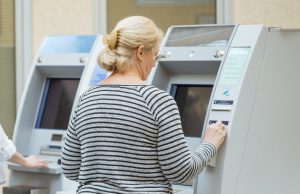Digitalise the customer experience in order to operate in an agile, convenient and secure manner
Unprecedented changes brought about by the advance of digitalisation have been taking place for years. Today we do not understand life without the Internet, it seems inconceivable to us not to chat on WhatsApp or not to enjoy our favourite series on a streaming platform. These are only three examples of the extent to which technology has changed our day-to-day lives over a short period of time.
The data support this new reality. Today, 92% of the Spanish population uses the Internet and 96% of households have broadband, according to the National Observatory of Technology and Society (ONTSI).
The same is true of smartphones, which are already the most widely used devices in Spain to connect to the Internet by 96% of the public, according to the study Mobile and Smart Connectivity 2021, compiled by IAB Spain.
One of the consequences of this high penetration rate of the smartphone is the boost in demand for digital products and services. Telephones are not only used for receiving or making calls, sending text messages or chatting. They enable us to connect to social networks, find out what is happening in the world through digital newspapers, listen to the radio and watch television, shop in large distribution chains or in more modest shops and carry out transactions with the Administration, among other utilities.
Almost half of the people who shop online do so using their mobile phones, as it is easier and more convenient for them. This technological leap has driven a change in the habits and expectations of consumers, who are increasingly familiar with the benefits provided by the digital experience.
Spanish banking, the second most digitalised in the world, is no stranger to this reality. In Spain, the use of online banking far exceeds the EU average and has already become the preferred channel for customer service. Seventy-two per cent of users prefer to interact with their financial institution through digital means. This reality compels the banking sector to a continuous process of innovation in order to retain and attract new customers.
"Just as ATMs and credit cards made shopping and payments easier in their day, the development of digital banking has improved the customer experience, who can now operate with their bank in a more agile, convenient and secure manner", maintains Alberto Aza, CECA's spokesperson.
This banking association is made up of nine financial institutions: CaixaBank, Kutxabank and Cajasur Banco, Abanca, Unicaja Banco, Ibercaja Banco, Caixa Ontinyent, Colonya Pollença and Cecabank. All of these institutions are fully aware of the importance of developing good digital tools.
Every year, CECA member entities invest up to €1,600 million in innovation. This has allowed these banks to make a broader range of digital products and services available to their customers, which has been particularly important during the Covid-19 pandemic.
This effort has enabled many people to continue to operate with their bank or savings bank through digital channels, either from their computers or via mobile applications, with the same normality as if they were visiting their branch in person. In fact, online banking users over the age of 65 increased by 28% during the coronavirus crisis.
This is the reason why banks have implemented formulas that allow this group to improve and facilitate their experience. One of these measures designed to reduce the digital divide is the development of financial education programmes. Over the past three years, CECA's member entities have earmarked more than €12 million towards these programmes.
COMMITTED TO FINANCIAL INCLUSION
Another positive effect of the digitalisation of banking is that it helps to tackle financial exclusion. "It brings banking products and services closer to the population without geographical or time constraints and, in turn, enables improved customer service", adds Alberto Aza.
Since 2020, the use of online banking has increased by 14.8% in rural Spain. This shows that digital channels ensure access to financial services for people across the country, no matter how far away they are from the cities.
Despite this, in order to guarantee an adequate service to municipalities in rural areas where there is no branch, CECA sector entities have been operating for some time with alternative channels such as mobile branches ("ofibuses") and financial agents or more innovative solutions, such as cashback and cash-in-shop (withdrawal or deposit of cash in a commercial establishment). In addition, under the terms of the collaboration agreement signed by the banking associations with the Spanish Postal Service, the Correos Cash service is offered, which enables users to make cash withdrawals from post offices or have cash delivered to their homes.
Digital innovation also makes it possible to develop new products and services that were previously inconceivable. One example is Bizum, the mobile phone payment solution developed jointly by Spanish banks, which already boasts more than 20 million users.













